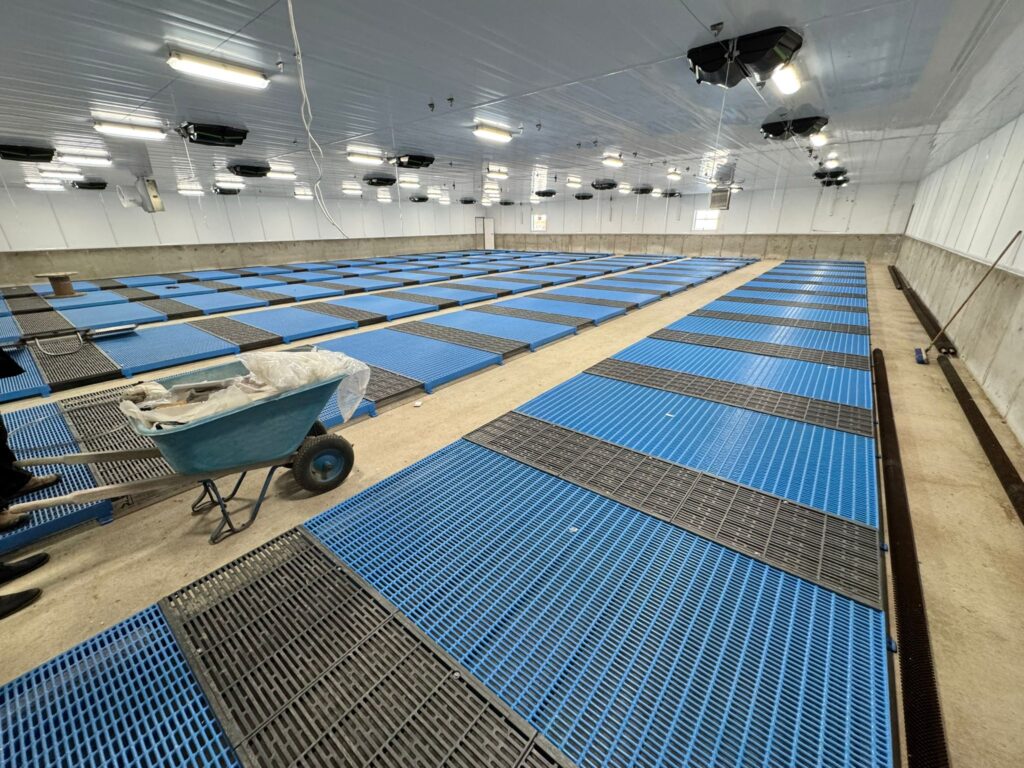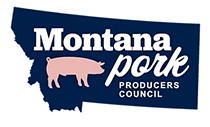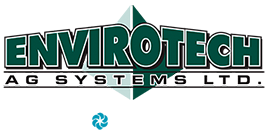Swine ventilation can vary based on the type of production and type of barn.
Here are the most common types and a brief description of each:
Barn design and layout are not dependent on any particular style of chimney ventilation. The use of power ventilation to create a negative pressure in which air is exhausted through fans mounted directly to the ceiling with tubes that go up and out of the roof of the barn. Air intake for this type of ventilation can be either wall inlets or ceiling inlets. In the wall inlet system, the air is brought in directly, whereas in the ceiling inlet system, the air is brought in via soffit eaves or a cool cell room via the attic of the barn. This setup consists of designated variable fans that are specifically for minimum ventilation, and then larger output fans for the various higher ventilation stages.
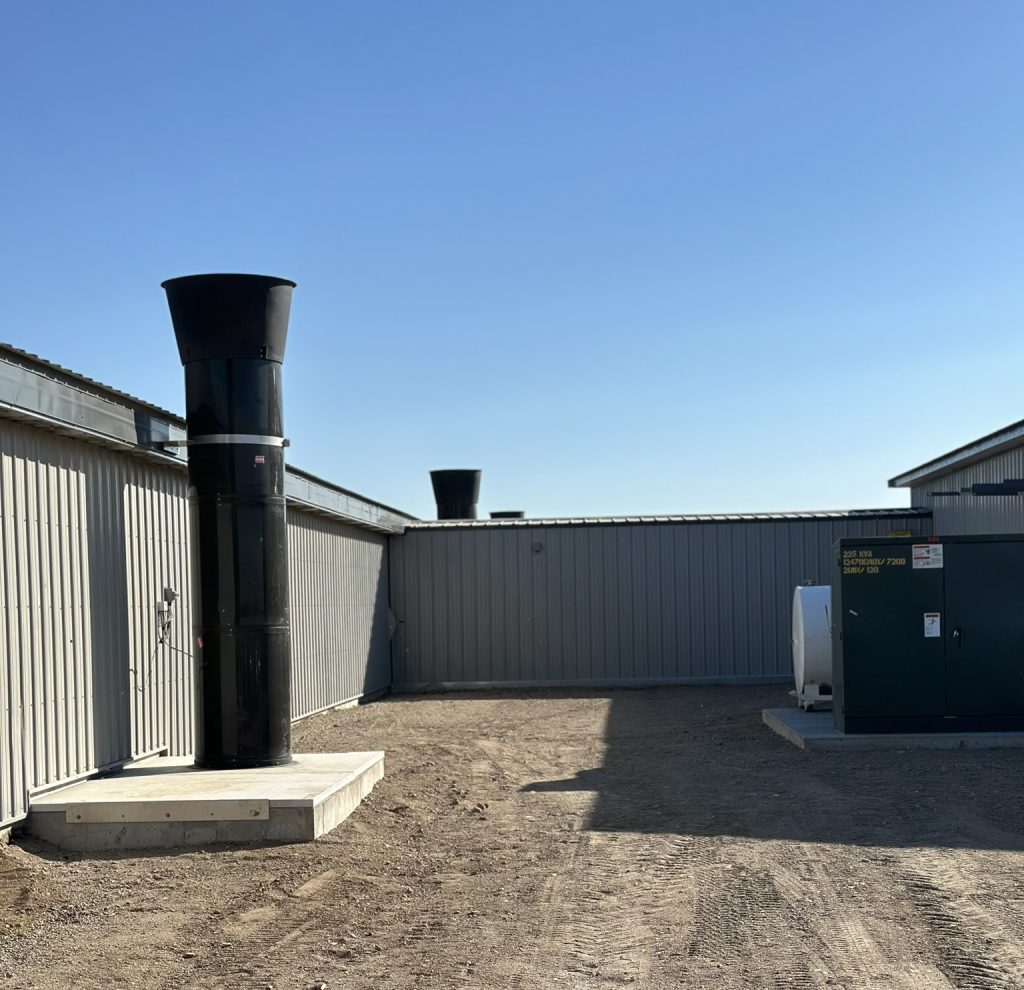
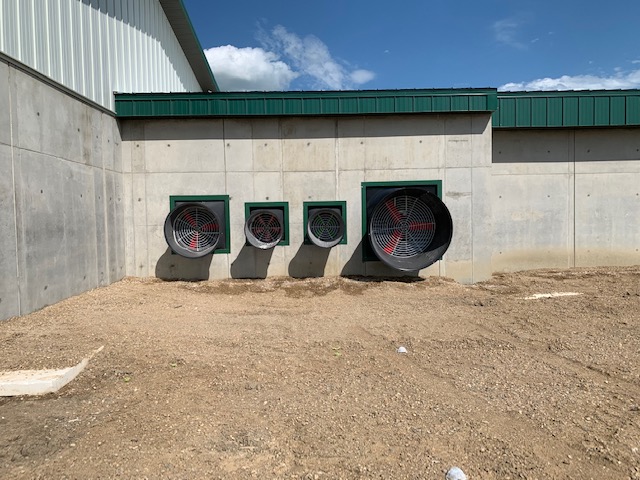
This ventilation style is typically set up as a longer, narrower barn design so that the air is pulled from one end of the barn to the other. The air intake for a tunnel barn is an opening in the gable end of the barn that is opened or shut using a curtain or door system to regulate the amount of air coming in. On the opposite end of the barn, you will have wall-mounted fans varying depending on the type of facility. Minimum ventilation is usually done through smaller variable fans and ceiling inlets, then, when the temperature reaches a specific range, the barn would then switches to tunnel mode.
One of our most popular and economical ventilation styles. This concept utilizes chimney ventilation for minimum ventilation and then implements wall fans for the additional stages. This setup utilizes ceiling inlets as air intake and can be grouped together to micromanage various areas as needed.
